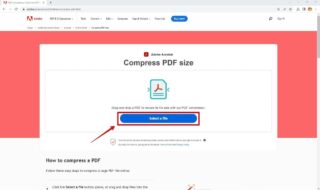According to Maya Angelou, what you say and do can easily be forgotten by people but they will rarely forget how you made them feel.
For website owners, user experience has to do with improving the satisfaction that your users gain by enhancing usability, as well as efficiency and accessibility while they interact on your website. It has to do with how you make your users feel as they navigate your pages. Great user experience (UX) is the ultimate boost to your ability to make sales. A website with a fantastic UX compels your users to continue engaging with you.

The more your users engage with your website, the higher the conversions you will have. With this in mind, check out five ways by G Squared to improve your website’s user experience and ultimately drive sales:
Contents
Craft an amazing homepage
The core message of your website should be reflected in your homepage. There is no need to include every message on your homepage because too much text can drive your audience away. Keep homepage content brief and uncluttered. There should be a connection between other web pages and your homepage. Also, create a link on your logo that leads to your homepage.
Use superb CTA
Your conversions will receive a boost if you use persuasive call-to-action. CTAs hint your visitors about actions to carry out while navigating your site. Create clear call-to-action and make them stand out. When users are confused about what to do, they will exit your website even if they have an interest. If you are interested in ocr data entry make sure you add annotations.
Work on the load speed
The amount of time that your website should take to fully load is between 3 and 4 seconds. Websites that take longer than 4 seconds to load reflect a bad UX. This will cause your visitors to exit your website at once. Visitors that have bad experiences will never return. Work to increase the load speed of your site to within 3 seconds.
Your website should be responsive
You need to put into consideration the plethora of devices that users surf the web with. These devices include iPads, mobile phones, laptops, tablets, etc. Your website needs to respond in seamless fashion regardless of the devices that your visitors use. Responsiveness is one of the vital elements of UX design.
A responsive website will be able to adapt the layout to any screen resolution. This makes your site to appear fantastic on all gadgets. If your visitors know that your website does not adapt to all their devices, they will look elsewhere. But a responsive website means that your customers can make purchases from any of their devices.
Add clear contact details
As online users come to your website and navigate, they might have questions. If they do not know how to reach you, they will leave your website and never return. Include the right contact details like your email address, phone number, and business address while designing your site. Also, make it easily accessible to your audience at any point in time.
Use these tips above to optimize your website for a better UX and you will see your conversions begin to increase.



